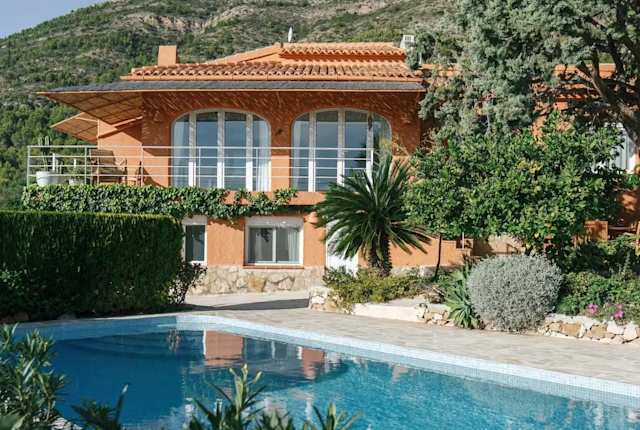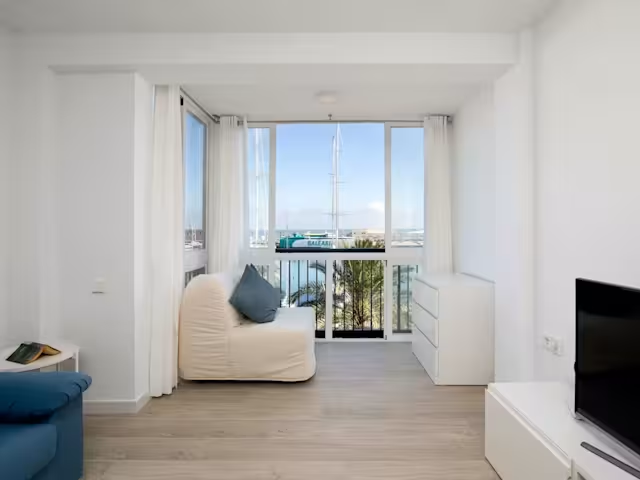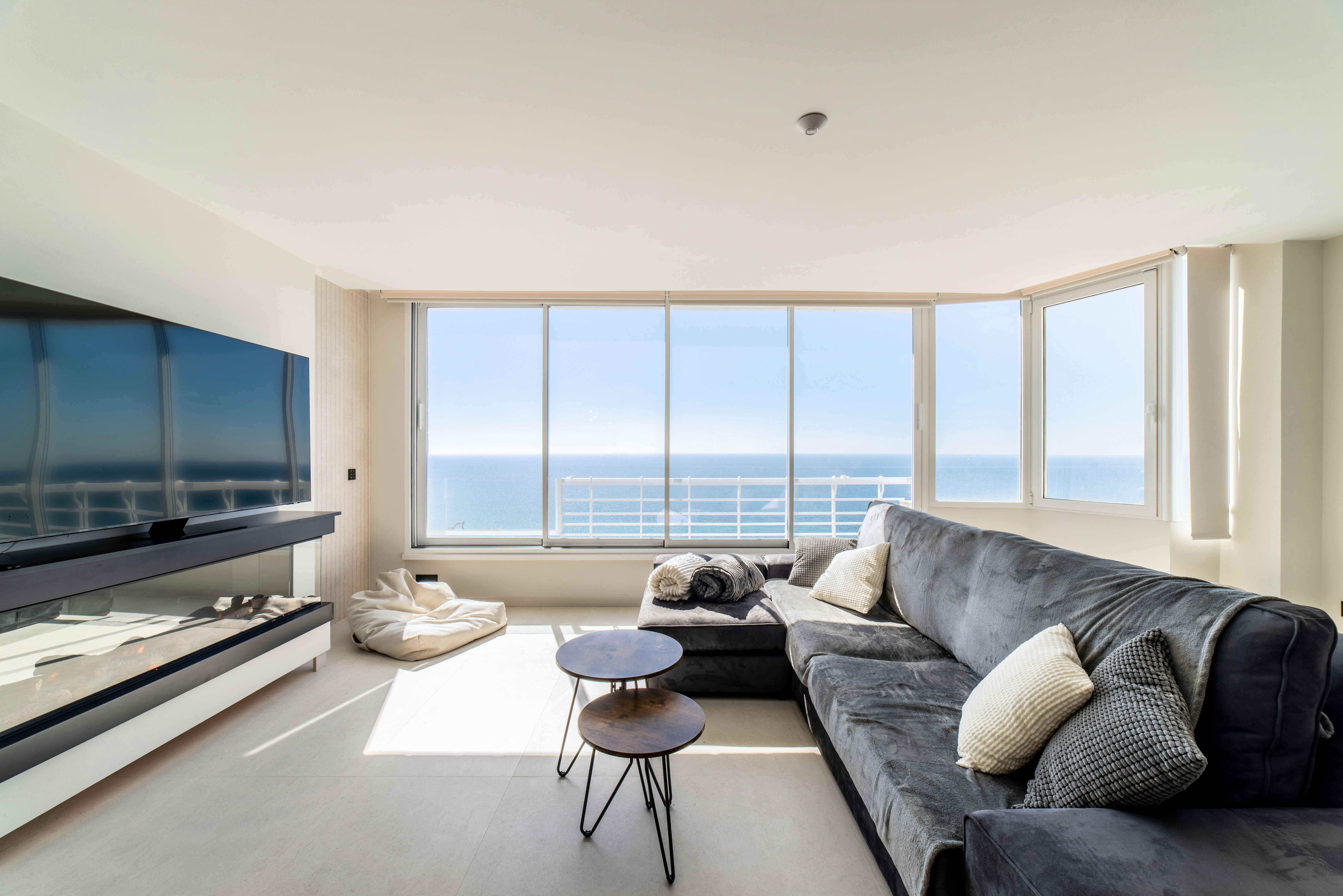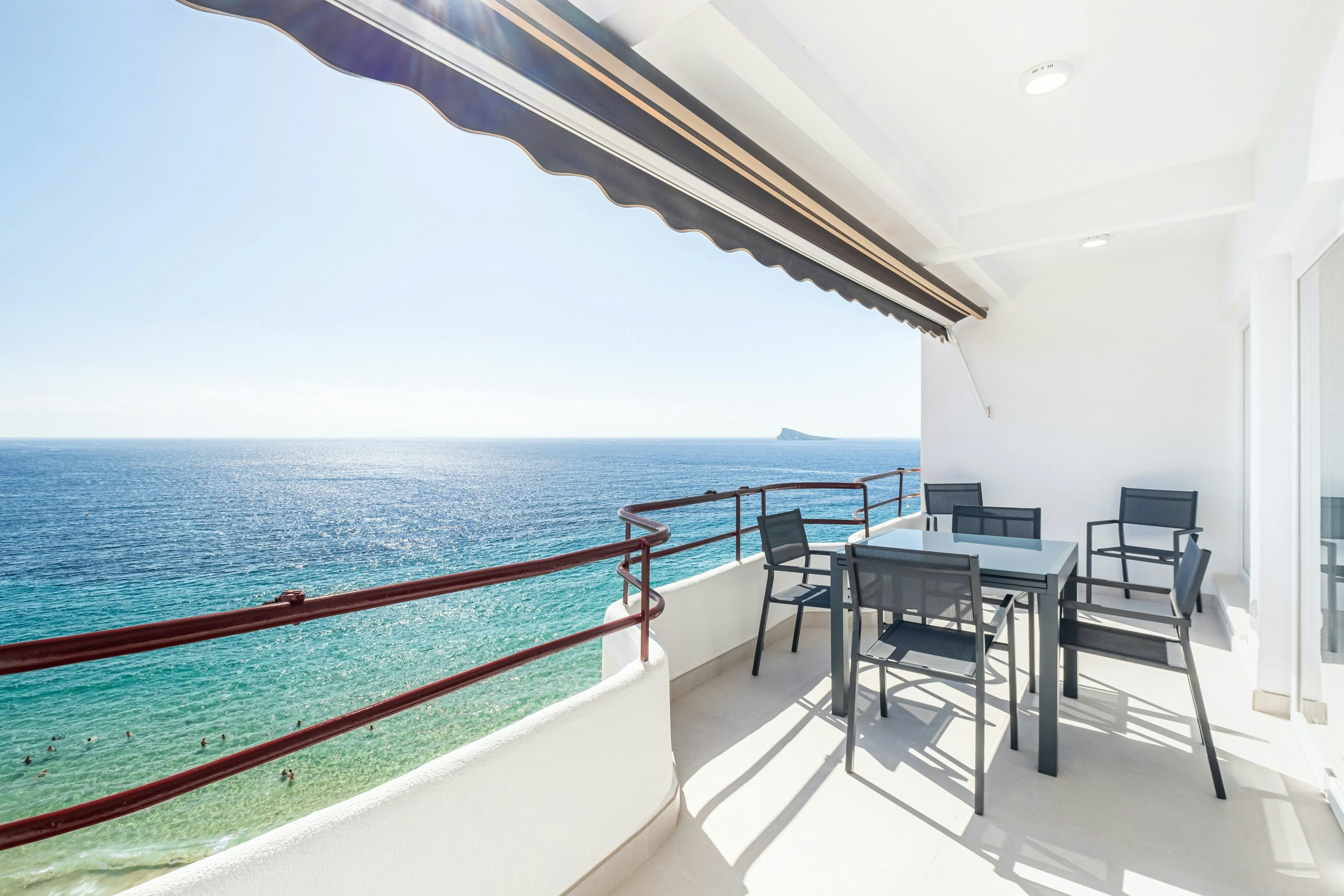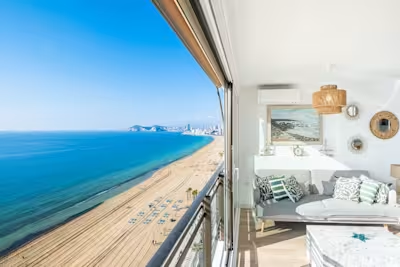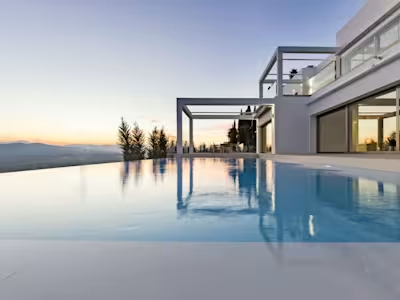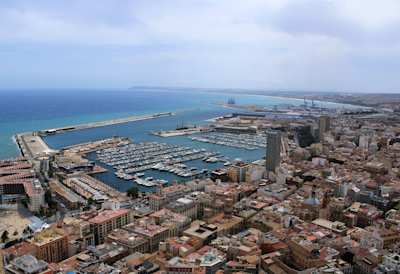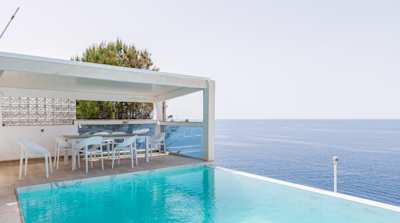Discover Alicante With These Areas To Avoid, Hidden Gems & Other Tips
How to seek solitude in Spain’s most renowned holiday destination
~
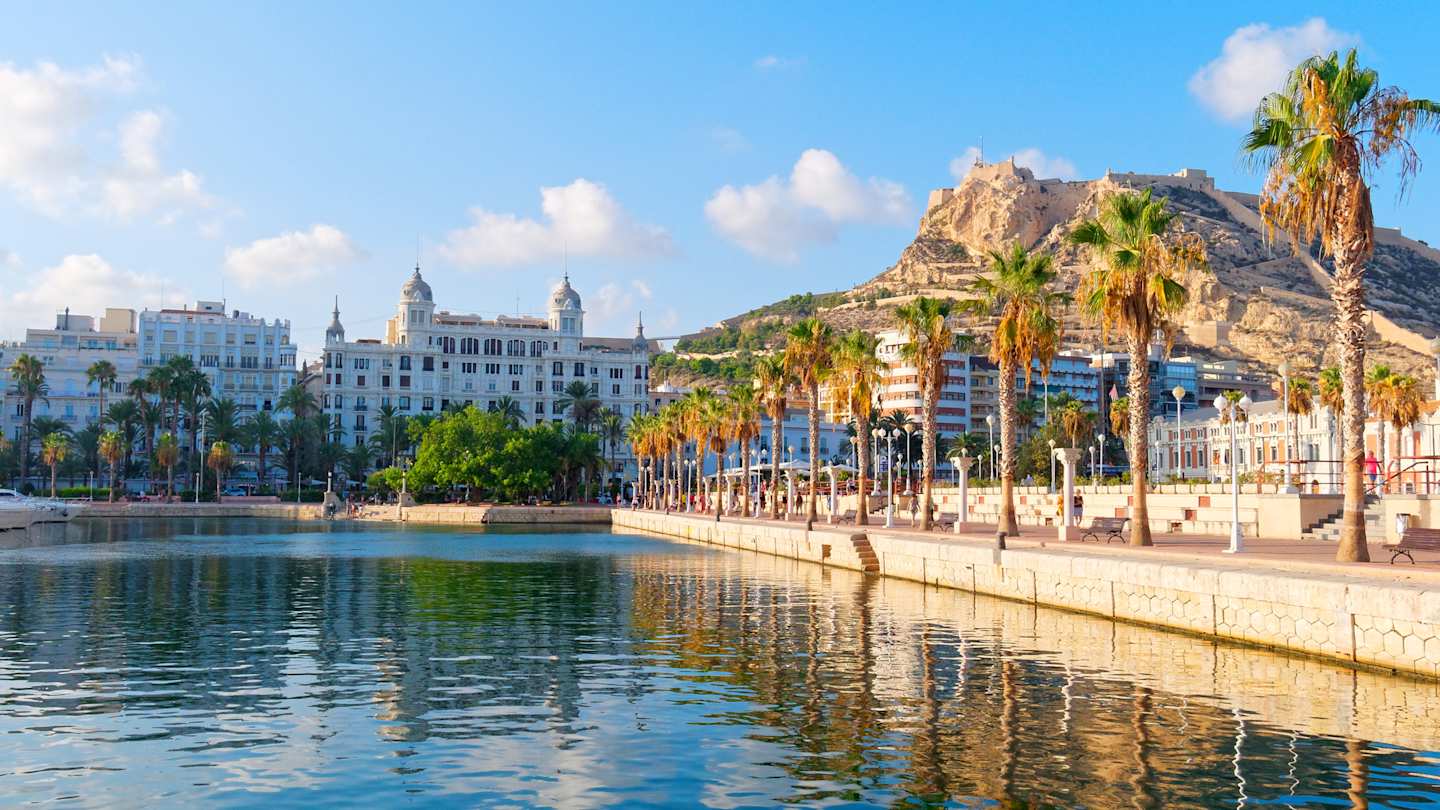
Home to the spectacular Costa Blanca, over three million tourists flock to Alicante’s beaches each year. If you’re reading this, then you’re probably wondering what busy areas to avoid in Alicante. Luckily, this province has a lot more to offer beyond its jam-packed coastline, where idyllic countryside and majestic mountains await. Our travel experts at Plum Guide know all of Alicante’s best-kept secrets, and have shared their insights on how to enjoy a quiet, crowd-free holiday in this sunny corner of Spain.
Swap summer for the shoulder seasons

Panorama of the village of Altea at sunset in spring, Alicante, Spain
As Alicante enjoys warm weather all year round, there’s no bad time to visit the region. However, peak summer (late June to August) is when it’s at its busiest, with tourists making the most of the high temperatures and low humidity. If you’re not a fan of busy beaches, we recommend visiting Alicante in spring or autumn when the worst of the crowds haven’t arrived yet.
Between March and May, the temperatures are mild and the whole area comes alive with colourful blossoms. It’s the best time for getting out and about, whether you want to hike through the mountains or stroll around the pretty towns and villages. Spring evenings tend to be a little cooler with a light breeze, so be sure to pack an extra layer. Easter is a big holiday in Alicante, so if you want to come in spring, then it’s worth planning your trip to coincide with the festivities. Join the lively processions and cultural activities, and be sure to try traditional Easter dishes like mona de pascua, a sweet bread with a hard-boiled egg in the centre.
Between September to November, you’ll find the crowds gradually dwindling, making sightseeing a much more enjoyable experience. The temperatures are a little cooler, but they’re a welcome break from the scorching summer days. You don’t have to worry about shops, restaurants and attractions closing either, as people live and work in Alicante year-round. There are plenty of exciting festivals and events to look forward to during the autumn months, such as the Alicante Gastronomic Festival, the International Puppet Festival and the Day of the Valencian Community. As the name suggests, the latter is about honouring the Valencian community with parades and festivities showcasing local traditions.
Seek out offbeat attractions
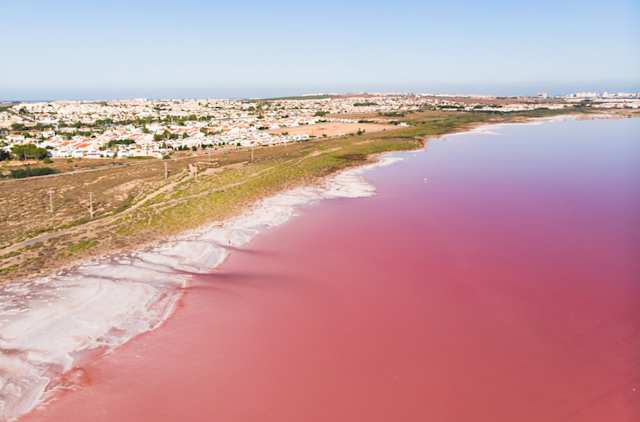
Wide view of the pink salt lagoon in Torrevieja, Alicante
It may seem obvious, but one of the best ways to avoid Alicante’s crowded areas is to swap the famous attractions for its more unusual offerings. Despite the number of tourists that visit, there are still plenty of incredible places that don’t get as many visitors. Those in the know will head to Las Salinas de Torrevieja, a spectacular collection of saltwater lagoons. Spanning 1,400 hectares, this nature reserve is home to flamingos who come to feast on shrimp that live in the bright pink waters of the lagoon – visit in March, April and May during their breeding season.
If you’re keen on vistas, we recommend skipping touristy places like Santa Bárbara Castle and Balcon del Mediterraneo – both on our list of busy areas to avoid in Alicante – and seeking out lesser-known viewpoints. If you don’t mind a little workout, hike La Cruz de la Muela in the Sierra de Orihuela mountains. At 465 metres, the panoramas from here are unbeatable. Mirador Cruz del Portixol is another excellent viewpoint which includes a scenic cliff walk with incredible coastal views.
Alicante’s beaches offer something for everyone, from family-friendly spots with plenty of amenities to beaches where you can enjoy a taste of the lively party scene. But for those who want to escape the foam parties, there are many hidden bays and secluded beaches where you can swim and sunbathe in peace. One of our favourite places is Cala Baladrar in Benissa. This little cove is backed by pine-clad cliffs, offering a tranquil spot to relax. Want to make sure you’re tanning every inch of your body? Head to Cala Racó del Conill in Villajoyosa where you can strip down and sunbathe au naturel.
Stay in less touristy towns
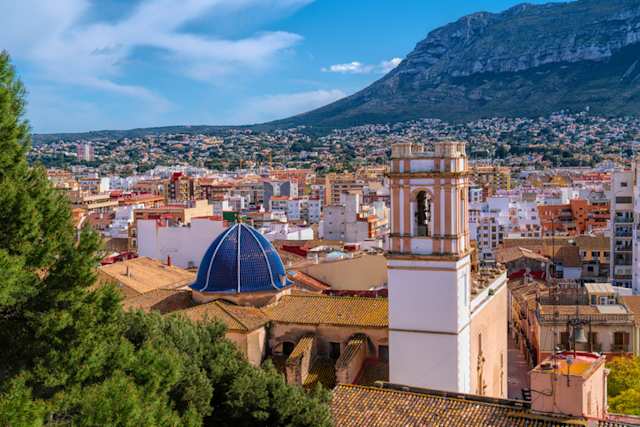
View of the old town of Dénia, including the Castell de Dénia, Alicante, Spain
Wondering where to stay in Alicante? While the sandy beaches of Alicante, Torrevieja and Benidorm may tempt you to book your holiday in these resort towns, millions of other visitors are thinking the same. Instead, beat the crowds by staying in less-visited towns and villages for a more peaceful experience. If you’re seeking relaxation but don’t want to be too isolated, Dénia is a great option. Home to some beautiful beaches, this is more of a working town and attracts mainly Spanish tourists. It doesn’t get as busy as other resorts, but you’ll still find a good offering of bars, restaurants and shops. When you’re not swimming in Les Marines or snorkelling in Les Rotes, take a walk through the town’s alleyways up to the 10th-century Castillo de Denia for some magnificent photo opportunities.
If you don’t mind not being by the sea, head up into the mountains to discover a different side to Alicante. Surrounded by dramatic scenery, Benimantell is a charming town ideal for nature lovers. The surrounding countryside is dotted with ancient farmhouses, castle ruins and 1,000-year-old olive trees. Take one of the many fantastic hikes around, such as Penya Roc, Placas del Eco and Barranc de l’Arc, while more adventurous travellers can try rock climbing and canyoning.
Nestled at the bottom of the Sierra de Orihuela mountain range, the city of Orihuela is the best choice for history and art lovers. Its city centre is a Historic Artistic Site, with a plethora of museums, galleries and monuments such as the Baroque Palacio de la Granja and the Colegio Diocesano Santo Domingo.
Explore Alicante’s hinterland
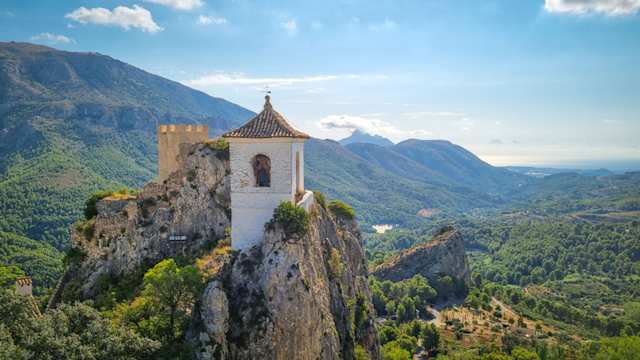
The bell tower of Guadalest Castle in the mountains of Alicante, Spain
Spending time inland is another one of our tips about busy areas to avoid in Alicante. Keen hikers can take on the Montgó Massif, towering over the land at 753 metres. Don’t forget your camera, as the views from up here are hard to beat. Another challenge to take on is the Barranco del Infierno (not to be confused with the one in Tenerife). Also known as Hell’s Gorge, the trail squeezes through a ravine with towering cliff walls and a picturesque waterfall to cool down.
Can’t get enough of the breathtaking landscapes? There are plenty more hiking trails in other mountain ranges like Sierra de Bernia, Sierra de Mariola and Sierra de Aitana. We suggest visiting Castell de Guadalest for spectacular views, too. If it’s a particularly hot day, you may want to skip the hike and swim in the Algar Waterfalls instead. Its clear waters and calming greenery are wonderful places to spend the day.
If your idea of the perfect holiday doesn’t involve hiking boots, how about a glass of wine instead? Surrounded by almond groves and vineyards, the Jalón Valley is revered for its Moscatels and full-bodied reds. There are a handful of wineries to tour and sample the goods, with some of our favourites being Bodega Pepe Mendoza and Bodegas Riko. While you’re at it, why not add on an olive oil farm tour? Señoríos de Relleu in the hills above Alicante offers tours of the grounds and tastings of the liquid gold paired with delicious local dishes.
Take boat trips to quiet spots along the coast
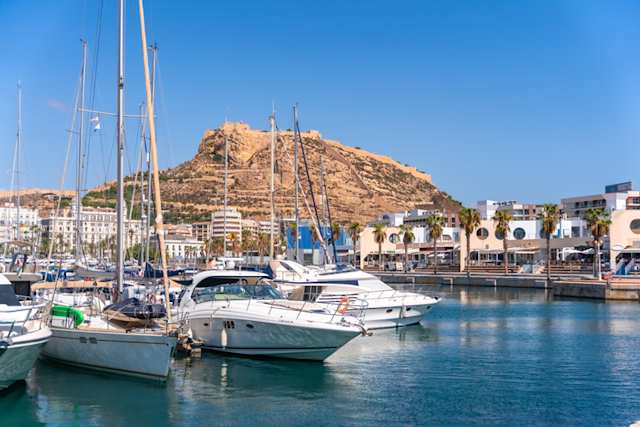
Boats bobbing in harbour at Alicante city's port, Spain
With such a beautiful coastline, it would be almost criminal not to get out onto the water. In fact, a boat trip is one of the most effective ways to avoid Alicante’s crowded areas. Taking a private boat tour or chartering a yacht will allow you to access remote beaches and less accessible spots along the coast. Not only will you be able to sunbathe in peace, but you can also snorkel in more isolated places where masses of tourists haven’t ruined the reef.
We recommend Alicante Catamaran, which offers various experiences, from party boats to sunset tours. Kayaking is another fun way to explore the sea, and you’ll find plenty of rental services in various towns along the coast. The benefit of kayaking is that you can go at a slower pace, discovering hard-to-reach sea caves such as Cova Tallada, a stunning sea cave in the Montgó Natural Park.
Just off the coast is Isla de Tabarca, a small island that makes a lovely day trip alternative to busy city centres. Once a refuge for Berber pirates, the village on the island is surrounded by defensive walls and declared a Site of Special Interest. Despite its size, there are plenty of things to do on the island, from tucking into fresh seafood at the beach bars to snorkelling in clear waters home to marine life such as octopus, seahorses and turtles.
